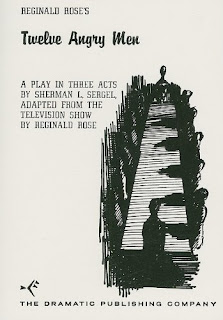6th Field Experience Blog, EGL 441 Samantha Summers
Observing Writing Experiences

In a class I recently observed, the teacher provided students with a "planning page template" to plan out an argumentative essay based on a novel that they had been reading. The planning page template was projected on the SmartBoard, and students also received the template in printed form. The template listed several steps that the students had to address in sequential order. I recorded the contents of the template in my Field Experience notebook, so I will replicate it here:
1. Claim: Restate the question and answer it
2. Text Evidence #1: Use a quote
3. Reasoning: Explain your text evidence
4. Text Evidence #2: Use a paraphrase
5. Reasoning: Explain your paraphrase
6. Summary: Change the wording of your claim
The teacher also, verbally, gave tips to go along with this template. He advised the students not to just throw in quotes, but to instead introduce quotes, such as by using, "The passage states..." Additionally, the teacher reminded the students not to use the phrases "I believe" or "in my opinion." The teacher also urged students to utilize a transition word between their first piece of evidence and reasoning and their second piece of evidence and reasoning in order to help the reader. During this planning activity, the students were all expected to work at the same pace. The teacher would go over an individual step, such as the claim, and then gave the students time to record their claims. The teacher would give students an allotted amount of time to complete a step before moving on to going over the next step and then giving the students time to complete that next step. It seems that the teacher assumed that all students can work at about the same pace. However, I noticed that while some of the students needed the full amount of allotted time to complete a step, other students would finish a step before others and then had to sit, wait, and do nothing until the teacher prompted the students to move on to the next step. Also, the teacher assumed that the students did not need to be shown any examples of this type of writing. He told me that he believed that showing examples prevents the students from coming up with their own creative thoughts.
I really liked the idea of providing the students with a template for planning out their writing, since these students did not have much prior experience writing formal essays, according to the teacher. If the students memorize this type of template, it could really help them to effectively address all aspects of an argumentative essay on a future timed test. As Christenbury and Lindblom note, "Giving students practice with prompts and timed situations can help them feel more comfortable with the specific requirements of writing on demand" (Christenbury & Lindblom 306). Also, in "Getting to the Core," the authors write that, "...the CCSS emphasize the importance of using textual evidence necessary to support a writer's analysis, reflection and research" (Giouroukakis & Connolly 72). Therefore, I thought that the teacher's emphasis on using textual evidence was an effective way to make sure that the students achieve the objectives set forth by the CCSS. If I teach grades 7-9 in the future, I would definitely emulate this teacher's emphasis on textual evidence. I would also distribute a planning page template similar to the one that he provided. I think the template is a great way to keep students organized and on-topic while writing.
One thing I would change about this lesson is that I would give students the option to proceed independently to the next step if they felt comfortable with moving on before the end of the allotted time for that step. Also, I think that I personally would model or show an example of a claim or of text evidence and reasoning, especially since the students did not have a solid background on writing full-out essays. Lastly, although the students were only planning their papers when I observed the class, if I were to replicate this lesson I would follow it up with a subsequent peer-response group activity after the students had produced a first draft. Christenbury and Lindblom advocate utilizing peer-response groups, because this strategy allows students to "'test out' their writing on an audience" and also allows students to learn from and teach their peers (Christenbury & Lindblom 307).
Video about peer critique:


I agree with your observations, Sam--in the 8th grade class I observed yesterday, doing a similar essay-planning page, students worked at their own pace (with the teacher explaining everything at the start before they began) and I think it worked a lot better for them. Some moved on before others, and different students took longer on different sections, but they wound up at the same end goal. They also worked in pairs and there was a lot of good collaboration that helped them think of ideas that they wouldn't have thought of on their own.
ReplyDeleteWhile observing in an 8th grade class, I was pretty surprised at how specific and formulaic the writing lesson was, and even now just looking at the steps that your teacher put on the board and had the class follow still initially threw me off for a moment. I kind of forgot that students actually do need that formulaic approach initially, as they begin writing, and it is once they have that foundation that they can begin to add voice and experiment a little bit. I think you make a great point that it may have been cool for the teacher to encourage students to move on if they felt comfortable to do so, as it may have made the process seem more natural, or more like a train of thought. I would be so interested to hear how he does peer review moving forward.
ReplyDelete